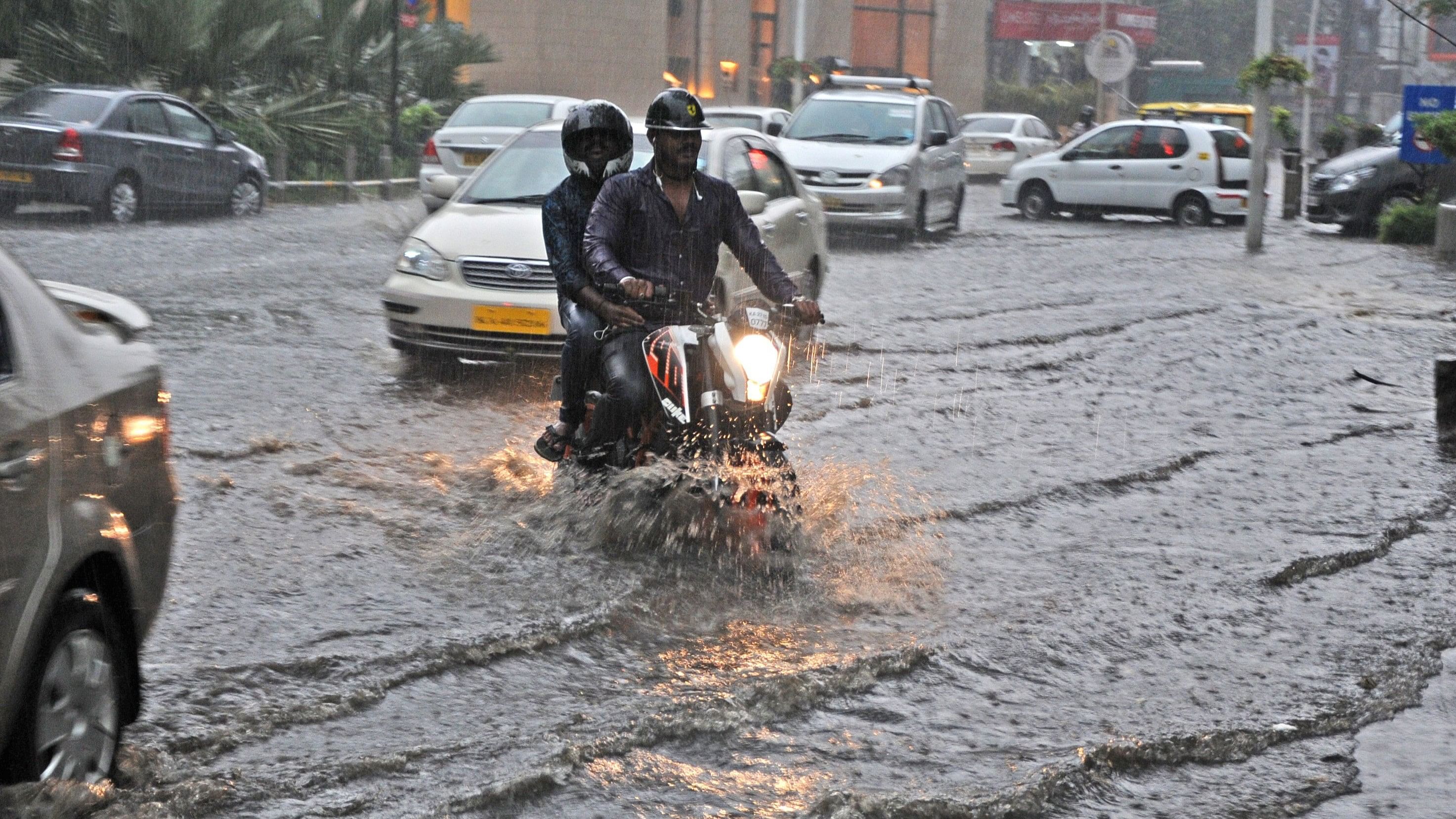
Overnight heavy rain has caused flooding across Bengaluru city
DH Photo
Roads turned into rivulets, bringing traffic to a standstill, and water gushed into many buildings, following heavy early morning rains in Bengaluru on Monday. It was perhaps the worst nightmare this monsoon as commuters were stuck on flooded roads for hours, and some neighbourhoods turned into islands. The best-planned cities in the world can experience floods when it rains beyond their carrying capacity, but that is not the case with Bengaluru, where life can go haywire at the first hint of rain. Though it is the same old story year after year, the Bruhat Bengaluru Mahanagara Palike (BBMP) and other civic authorities remain unprepared to face the monsoon. One of the reasons for flooding is the absence of an outlet for rainwater, as most primary, secondary, and tertiary drains are either clogged or blocked by unauthorised constructions. This is just one part of the problem.
Bengaluru is located on the ridge and its undulating terrain should have allowed the natural flow of water in three directions, Koramangala-Challaghatta Valley, Hebbal Valley and Vrishabhavathi Valley. According to a study by the Indian Institute of Science (IISc), this undulating terrain aided in the formation of interconnected lakes, which enabled the transfer of excess water from one lake to another. There were nearly 1,500 water bodies in 1800, which has now come down to less than 200. The British called Bengaluru ‘The land of a thousand lakes’. Today, the city has become flood-prone due to unscientific urban planning, topographic alterations, encroachment of lakes and stormwater drains, loss of interconnectivity between lakes, and violation of buffer zones around water bodies.
Bengaluru was paralysed on Monday, just as it is in the wake of every heavy downpour, not because of nature’s fury alone, but also because of sheer human greed, aided and abetted by corrupt politicians. The damage has been done, the decay has set in, and it is impossible to reclaim the Bengaluru of the past. At least now, the government should demonstrate the will to take hard decisions to prevent further deterioration. While it goes without saying that all unauthorised structures should be cleared, drainages cleaned, and water bodies restored, the government should put a stop to further growth of the city and shift all future investments to the districts. Deputy Chief Minister D K Shivakumar, who often talks about enhancing the image of ‘Brand Bengaluru’ through grandiose plans like tunnel roads and a skydeck, should ensure that basic infrastructural needs are first met.